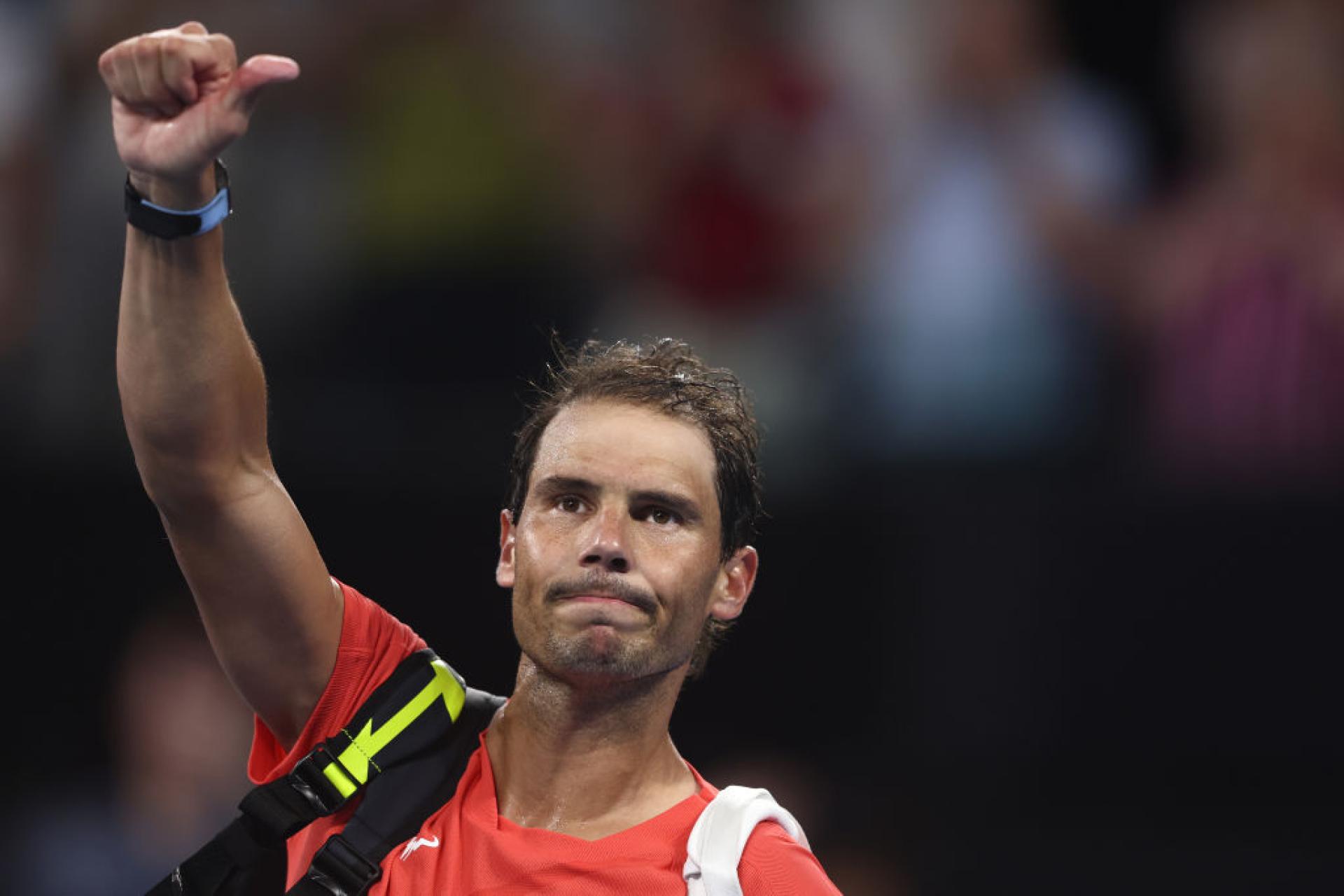
Rafael Nadal returned to play on a tennis court at the Brisbane International, after a year away from the ATP Tour due to the serious injury he suffered at last season's Australian Open.
Rafa's path in Brisbane lasted until the quarter-finals, after which he was eliminated by Jordan Thompson in three sets, mainly due to a new injury that forced him to withdraw from the Australian Open. However, the injury was not serious, so much so that Nadal is expected to play at the ATP event in Doha.
From that day on, no further updates from the person concerned on his physical condition and on the next appointments in which he will take part. Breaking the silence is the Spanish champion himself who sent a message to all his fans on social media, reassuring them: "After a period without posting anything here, here we are. Let's go back to training... with greater intensity," wrote the 22 times Slam champion.
As mentioned, Nadal should leave from Doha, taking part in the ATP 250 tournament.
His coach, Carlos Moyà, also spoke about it, and in recent days he gave an interesting interview about it. "If it's true that clay should be better for your joints, going from fast to clay, then back to the United States and then back to clay seemed a bit excessive. For this reason we chose to make this program, without many surface changes. Surface changes are not easy," explained Moyà.

Rafa together with his team has decided that he will continue to play on hard courts in Qatar, and will not go to South America to compete on clay.
It is a wise choice, that of Nadal and his team. Changing surfaces and going from hard to clay courts after an injury is risky. The change of surface is always delicate. But right now it's extremely delicate for Rafa. Despite his invaluable experience on clay courts, Nadal will prepare the change of surface slowly, following his pace.
Considering that he has been out for almost all of 2023 and has already suffered an injury after three matches in 2024, he cannot immediately push and stress his body to its maximum. He will have to push the accelerator carefully.
If he had now moved to clay court and then back to hard court for Miami and Indian Wells, his body could have reacted in an unexpected way. This is why he will follow an adequate timetable, to arrive at the change of surface precisely with the start of the clay-swing.
Carlos Moyà expresses himself on Rafa's come back
Interviewed by Puntodebreak, Moyà opened up about Nadal's physical condition and his next return on the court.
"Rafa is improving. We are cautious. Where we come from, we have to be cautious. We are slowly starting to train again. It wasn't serious, but enough that he couldn't play the Australian Open, which was one of his big goals," he said.
Moyà admits that he feared much worse consequences: "A fracture at this level lasts 3-4 weeks and in this case we were lucky that it didn't go beyond that. This happens in sport, but it's true that the moral blow was strong because it seemed ready and again there are the problems of the past."
On the come back on the court, the Spanish said: "Rafa reminded me of a bull that has been locked up for a year, you release him in the middle and he goes like a wild beast. After so many months of suffering, I saw him having fun again, both in training and in matches in Brisbane. It was the version of Rafa we all wanted. For the level, I was very satisfied with what I saw."
On the change of surface, Moyà then explained: "If it is true that clay should be better for his joints, going from fast to clay, then returning to the United States and then back to clay, it seemed a bit excessive. For this reason we chose to make this program, without many surface changes. I am an optimist, but also a realist. Rafa won Roland Garros a year and a half ago.
Before his injury at Wimbledon, he was having a spectacular year. I don't know if he is at that level, but if injuries don't stop him, I think he will be a candidate player for the tournaments he plays. He will need continuity, but if he succeeds, he will return to his previous level.
I don't think he can risk relapses. After the operation the tendon is much better than it was before the injury. He has earned the right to decide how, where and when to retire. Despite his situation, which has changed because he has a son, he wants to continue competing this way."
